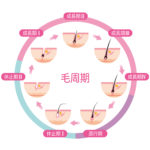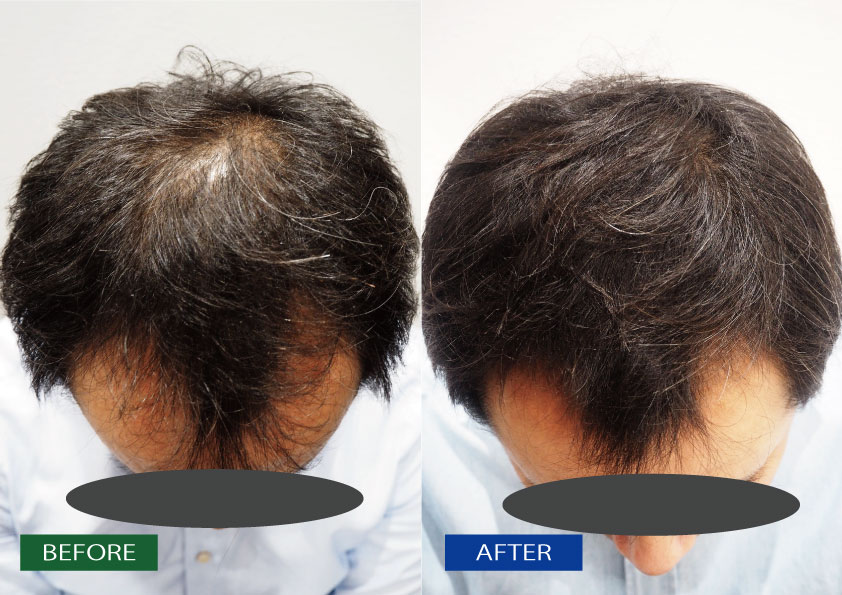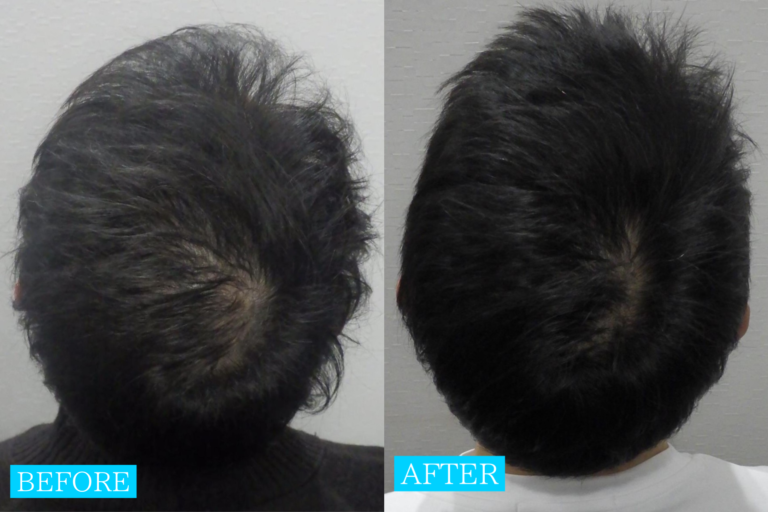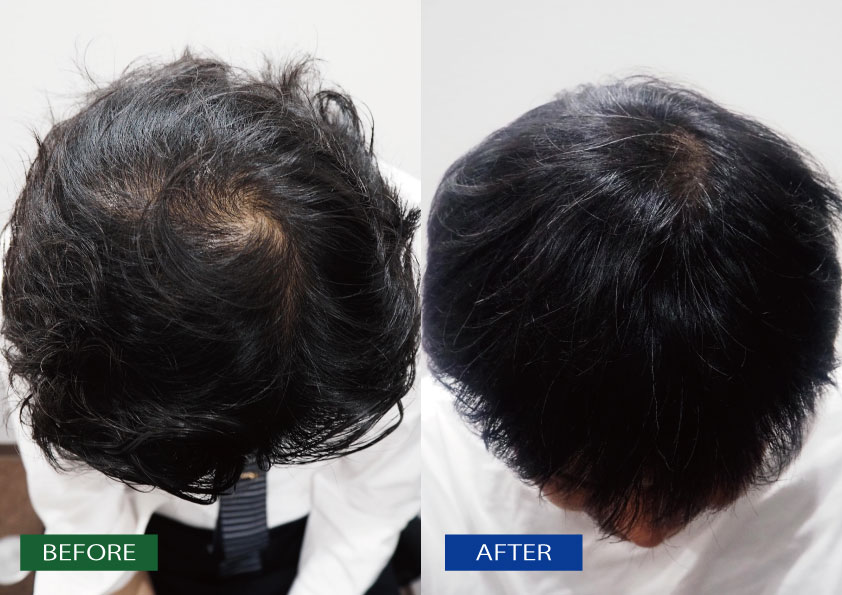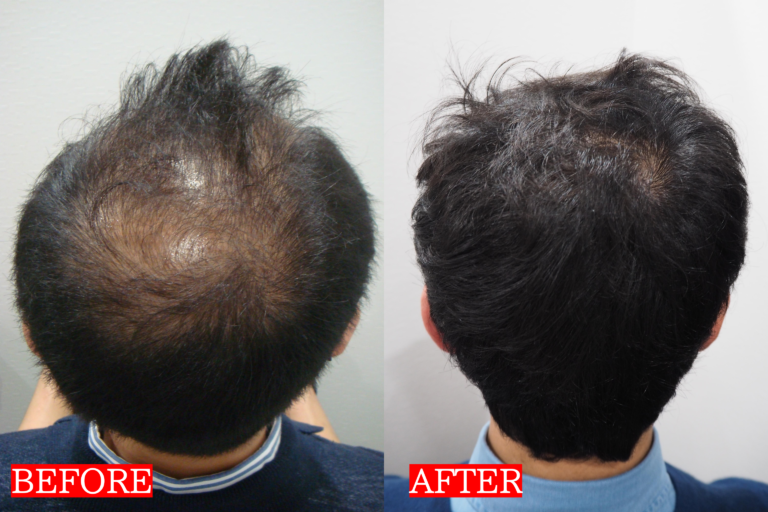
Many people may be concerned about changes in their hair, such as “I’m starting to notice thinning hair on my whirlpool”, or “I think I’m losing more hair on the top of my head lately. However, whirlpool baldness is not only caused by aging. In fact, it is related to various factors such as the effects of male hormones, heredity, stress, and lifestyle.
Some people often give up on the idea that “the only way to get rid of whirlpool baldness is to shave the top of the head” or “the only way to cover the top of the head,” but this is not true. Whirling hairline baldness is an alopecia that can be improved if appropriate measures are taken. The important thing is not to overlook the early symptoms, but to detect and start treatment as early as possible.
This article details the causes and symptoms of whirling baldness, how to self-check, how to prevent, and how to treat it. The latest treatment methods at medical institutions are also introduced. Please read to the end and make use of this information to help you prevent whirling hairline baldness.
Start your thinning hair treatment at Osaka AGA Kato Clinic with over 300 visits per month. Book a free consultation on Line.
この記事で説明する内容は?
- What are the Diagnostic criteria for Whirlpool baldness?
- How to do a Whirlpool baldness self-check at home
- How does Whirlpool baldness occur?
- What causes Whirlpool baldness?
- 5 ways to prevent Thinning hair on the whirlpool
- Hospital treatment for Whirlpool baldness
- Example of treatment for Thinning hair on the top of the head at Osaka AGA Kato Clinic
- Patient monitored at our clinic completed treatment [6 months] Male in his 40s
- Male monitor in his 50s, 3 months after treatment – occipital and parietal area
- Progress of treatment for a patient monitored at our clinic [30s male]
- Male monitor in his 40s [6 months after treatment – occipital and parietal area].
- Conclusion
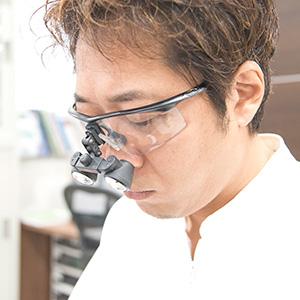
Kentaro Kato, Hospital director of Osaka AGA Kato Clinic group, specializing in comprehensive hair treatment. We specialize in cutting-edge treatments for a variety of clinically proven effective treatments for thinning hair and hair loss. Graduated from Faculty of Medicine, Kinki University in 2001 Worked at plastic surgery of Osaka Medical and Pharmaceutical University Hospital as an anesthesiologist from 2001 to 2005. Worked as a head of plastic surgery at major cosmetic surgery, Hair Transplant Department from 2005 to 2011. Opened Osaka AGA Kato Clinic in 2011. Japan Society of Plastic and Reconstructive Surgery, Regular Member. The Japanese Society for Regenerative Medicine, Regular Member. World Academy of Anti-Aging & Regenerative Medicine, Regular Member.
What are the Diagnostic criteria for Whirlpool baldness?
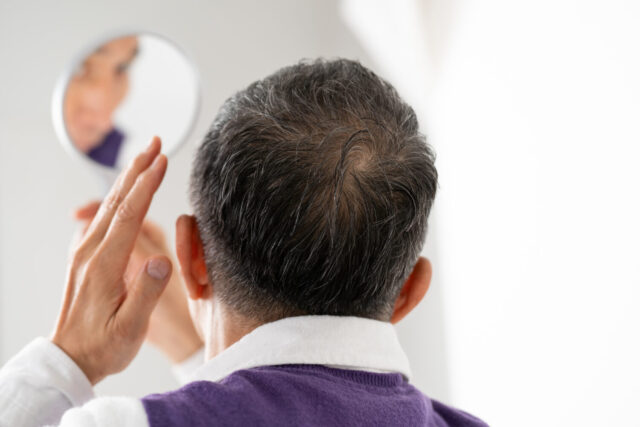
Whirlpool baldness or top baldness, also called alopecia areata, refers to the phenomenon of hair loss that begins around the top of the head at the whirlpool area. It is a type of hair loss that is strongly influenced by male hormones and is seen mainly in males, and is said to be difficult to notice in the early stages.
In fact, there is no clear-cut medically defined standard for whirling baldness. It is important to look in the mirror and judge for yourself that your hair may be thinning. However, knowing the early signs of whirlpool baldness will help you confirm the thinning of your hair by yourself. Here, we will explain the early signs of whirlpool baldness and how to check for yourself.
Early symptoms of whirlpool baldness
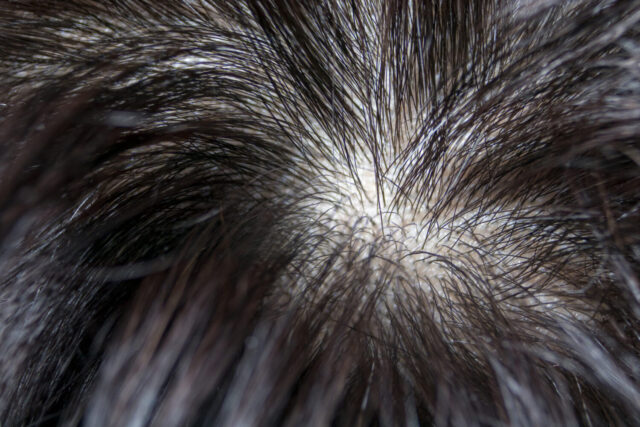
The early symptoms of whirlpool baldness are manifested in the following points.
- Hair fineness
- Decrease in hair volume
- Enlargement of thinning hair area
Hair fineness
An early symptom of whirlpool baldness is the gradual thinning and lightening of the color of the hair around the whirlpool. When you lift a strand of hair with your fingers, you may feel that there is less of it than before.
Decrease in hair volume
The hair in the whirlpool area may noticeably decrease and the scalp may begin to show through. If you use a mirror to check the top of your head, you may see the skin color more clearly than before.
Enlargement of thinning hair area
Thinning hair radiates out from the whirlpool and increases in extent over time. Initially, it begins in small areas, but over time the area expands.
The degree of progression of whirlpool baldness and the importance of early detection
Whirlpool baldness is a hair loss symptom that is difficult to notice in its early stages. However, if left untreated, it will gradually progress and hair on the top of the head will become sparse. It is very important to understand the progression of whirlpool baldness and to detect it early.
Whirlpool baldness generally progresses through the following stages
- Initial stage: Hair around the whirlpool gradually becomes thinner and begins to fall out. Scalp begins to show through.
- Middle stage: Hair around the whirlpool becomes sparse and the scalp becomes more prominent. Hair loss increases.
- Late stage: Almost all hair around the whirlpool is gone, exposing a large area of scalp. Hair loss may spread to other parts of the body.
If left untreated, whirlpool baldness will increase the extent of hair loss and make recovery more difficult. On the other hand, if the condition is detected in its early stages and appropriate measures are taken, it is possible to delay the progression of the condition or even recover from it.
For early detection, it is important to regularly check the condition of the scalp and hair. If it is difficult to notice changes by yourself, one way is to have a family member, friend, or hairdresser check the condition of your scalp.
If you notice even the slightest sign of whirling baldness, consult a doctor immediately.
How to do a Whirlpool baldness self-check at home
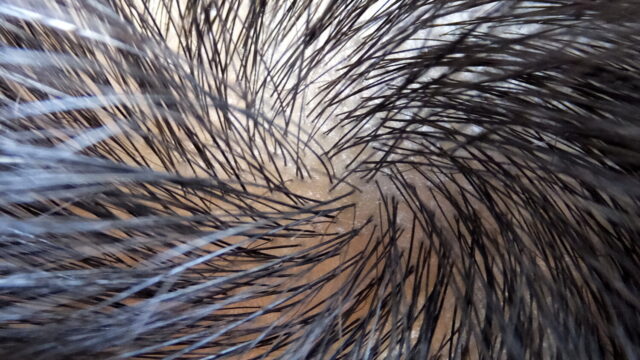
Methods to check for whirlpool baldness include
- Use mirrors
- Compare hair thickness and density
- Redness and itching of the scalp
Use mirrors
Since the top of the head is difficult to see by yourself, use a hand mirror to observe the parting of the hair and the nape of the neck. Use two mirrors, one held in front of you and the other used to look at the top of your head for a closer inspection.
Compare hair thickness and density
Compare the thickness and density of the hair on the top of the head with other parts of the head, such as the temporal area. If you see differences, you may have whirling baldness. Hold a cluster of hairs with your fingers and compare them to areas of the head that are not relatively thin.
Redness and itching of the scalp
Redness and itching of the scalp are not directly related to whirl baldness, but may indicate a problem with the health of the scalp. If your scalp is red, itchy, or sore, it is recommended that you consult a dermatologist.
How does Whirlpool baldness occur?

To understand why hair loss begins at the whim, it is necessary to know about the “hair cycle“. The hair cycle is the cycle of growth that each individual hair goes through, from the growth phase to the regression phase to the resting phase.
Under normal conditions, the cycle of new hair growth and old hair loss is repeated.
However, in the hair on the top of the head (especially around the whirlpool), which is more susceptible to the effects of male hormones, this hair cycle may no longer proceed normally. The growth phase shortens and the resting phase lengthens, resulting in hair loss and the absence of new hair growth. This is the mechanism by which whirlpool baldness occurs.
What causes Whirlpool baldness?
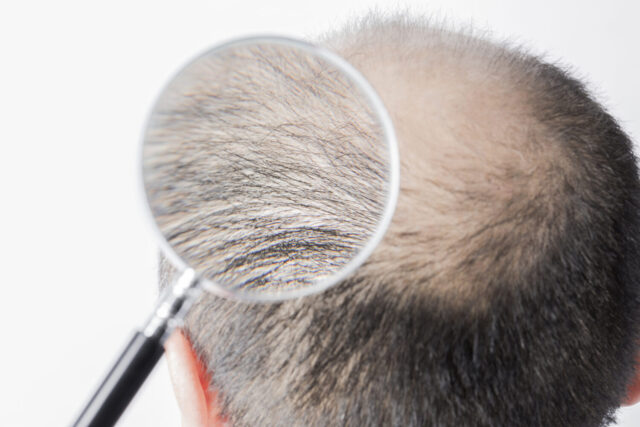
Causes of whirlpool baldness include
- Male Hormone Influences
- Genetic factor
- Sleep influences
- Dietary influences
- Effects of illness or medication
Each will be explained in detail.
Effects of male hormones (testosterone and DHT)
It is believed that excessive production of male hormones affects hair loss; the hormone DHT promotes hair loss by suppressing the activity of papilla cells and consequently shortening the hair growth cycle. As a treatment, drugs that inhibit the production of DHT may be used.
Genetic factor
Research has shown that thinning hair is a genetically inherited condition. Therefore, if you have a family member with thinning hair or alopecia, you are at increased risk for alopecia.
In particular, if your maternal grandfather or great-grandfather had thinning hair, you are more likely to have thinning hair.
Sleep influences
Stress disrupts the hormonal balance in the body and consequently affects the hair growth cycle. Therefore, stress management is important in the prevention of alopecia.
Sleep influences
Sleep is essential for the body’s overall recovery and repair, and this process also maintains hair health. Lack of sleep disrupts the body’s hormonal balance and affects hair growth.
Dietary influences
The nutrients we consume in our diet have a significant impact on the health of our hair. In particular, B vitamins, vitamin E, iron, and zinc are important nutrients for hair growth.
Effects of illness or medication
Certain diseases and medications can cause alopecia. For example, autoimmune diseases, thyroid disorders, and anticancer drugs can cause hair loss.
These alopecia can be corrected by treating the causative disease or changing the medication.
5 ways to prevent Thinning hair on the whirlpool
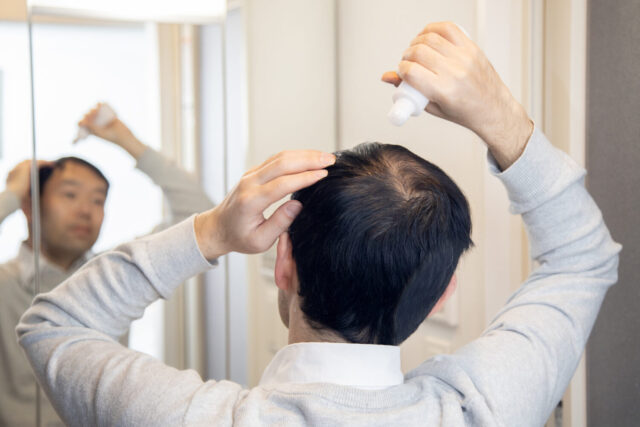
Prevention of whirlpool baldness can be done in the following ways;
- Shampoo for scalp care
- Scalp care with scalp massage
- Well-balanced diet
- Sleep and moderate exercise
- Early detection and early measures
Details of each are explained below.
Shampoo for scalp care
Scalp hygiene is important for healthy hair growth. Use a scalp-friendly deep cleansing shampoo to thoroughly cleanse the scalp of dirt, sebum, and residue.
Scalp care with scalp massage
Shampoos with strong cleansing power may adversely affect the scalp, so use them only once or twice a week, and usually choose shampoos that are gentle to the scalp.
Scalp massage stimulates blood circulation and helps nutrients reach the hair follicles. Gently massage the scalp with moderate force in a circular motion with your fingers. A few minutes a day is effective and should be done when shampooing or bathing.
Well-balanced diet
A well-balanced diet is not only related to your overall health, but also to the health of your hair. Be sure to eat a diet rich in protein, vitamins and minerals.
Vitamins A, E, zinc, and iron are especially important for scalp and hair health. These nutrients can be obtained from a diet rich in variety, including fish, meat, eggs, vegetables, fruits, and whole grains.
Sleep and moderate exercise
Good sleep and moderate exercise are important for stress management and overall health, and can help prevent hair loss. During sleep, growth hormones are produced in high amounts and the body undergoes a process of repair and regeneration. This includes hair health.
Moderate exercise improves blood flow and helps nutrients get to the hair follicles. Exercise also reduces stress and helps prevent stress from affecting thinning hair.
Early detection and early measures
Early detection and early action are critical in the prevention and treatment of thinning hair. To avoid missing early symptoms, be aware of changes in your hair and scalp.
And if you notice any changes in your hair, consult a specialist immediately. They can suggest the best treatment for you, depending on the progression of your thinning hair. By taking early action, the progression of thinning hair can be slowed or controlled.
Hospital treatment for Whirlpool baldness
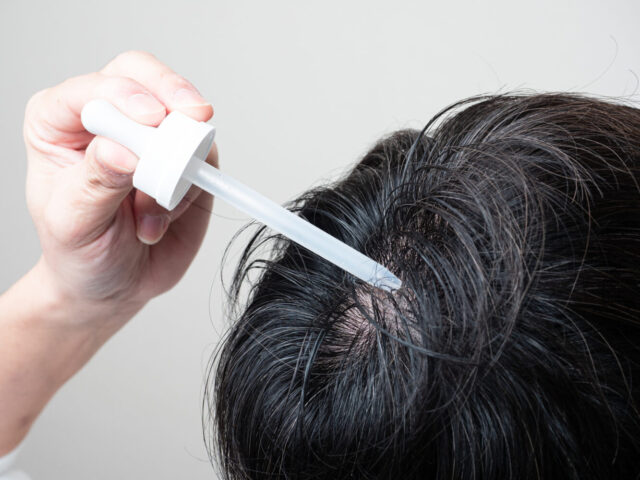
This section describes the whirlpool baldness treatments available at medical institutions.
How to diagnose whirlpool baldness at a clinic
To diagnose whirlpool baldness, dermatologists and clinics use specialized diagnostic techniques. First, the doctor performs a visual diagnosis of the scalp.
In particular, he or she will examine in detail the extent of the split ends of the hair and the thinning of the hair on the top of the head. The doctor also examines the patient’s hairline, scalp health, and hair thickness and texture.
In addition, the medical provider may use a microscope to observe the pores of the scalp in detail. This device helps visualize the condition of hair follicles and hair growth patterns, and provides a more detailed look at the cause and progression of thinning hair. Based on this information, the doctor will recommend the most appropriate treatment.
Treatment with finasteride
Finasteride is an oral medication that inhibits the production of DHT (dihydrotestosterone), a type of male hormone; DHT inhibits hair growth, so inhibiting its production can be expected to slow or control the progression of thinning hair.
Treatment with minoxidil
Minoxidil is a topical drug and is applied directly to the scalp. Minoxidil widens blood vessels, improving blood flow and promoting hair growth. As a result, hair thickness and density may increase.
Treatment with these medications, when used appropriately and in accordance with a doctor’s instructions, can help improve the symptoms of thinning hair. However, the effects vary from person to person and may not always be effective the first time. They also have side effects, so please consult with your doctor in detail and fully understand the benefits and risks before starting treatment.
Hair transplantation surgery
Hair transplantation is a surgical procedure in which hair follicles are harvested from an area without thinning or hair loss and transplanted into an area of whirling baldness. Because it uses the patient’s own hair, the risk of rejection is low.
There are two types of FUT and FUE methods: FUT involves removing a portion of the scalp and harvesting hair follicles, while FUE involves harvesting individual hair follicles.
Mesotherapy
Mesotherapy is a treatment in which nutrients (vitamins, minerals, amino acids, etc.) that promote hair growth are injected directly into the scalp. This improves blood circulation in the scalp and supports hair growth by delivering nutrients to the hair follicles. Regular treatment is expected to improve the quantity and quality of hair.
Example of treatment for Thinning hair on the top of the head at Osaka AGA Kato Clinic
Here are some actual examples of our treatment of thinning hair on the top of the head. Please follow the links for more information about the treatment and each step of the process.
Patient monitored at our clinic completed treatment [6 months] Male in his 40s
Male monitor in his 50s, 3 months after treatment – occipital and parietal area
Progress of treatment for a patient monitored at our clinic [30s male]
Male monitor in his 40s [6 months after treatment – occipital and parietal area].
Conclusion
Whirlpool baldness is a hair loss disorder caused by a combination of various factors, including the effects of male hormones, heredity, stress, and lifestyle. Since it is difficult to recognize the early symptoms, it is important to check the condition of the scalp and hair regularly and consult a doctor immediately if there are any changes.
Early detection and selection of appropriate treatment are the keys to improving whirlpool baldness. Treatment options include drug therapy, hair transplantation, mesotherapy, and HARG therapy, and you should choose the best approach for your individual situation.
To maintain a healthy scalp and hair, pay attention to your daily lifestyle and take measures to prevent whirlpool baldness.
Osaka AGA Kato Clinic offers custom-made treatment by doctors. Find the right treatment for your condition with a free consultation. Easy reservation on Line.



